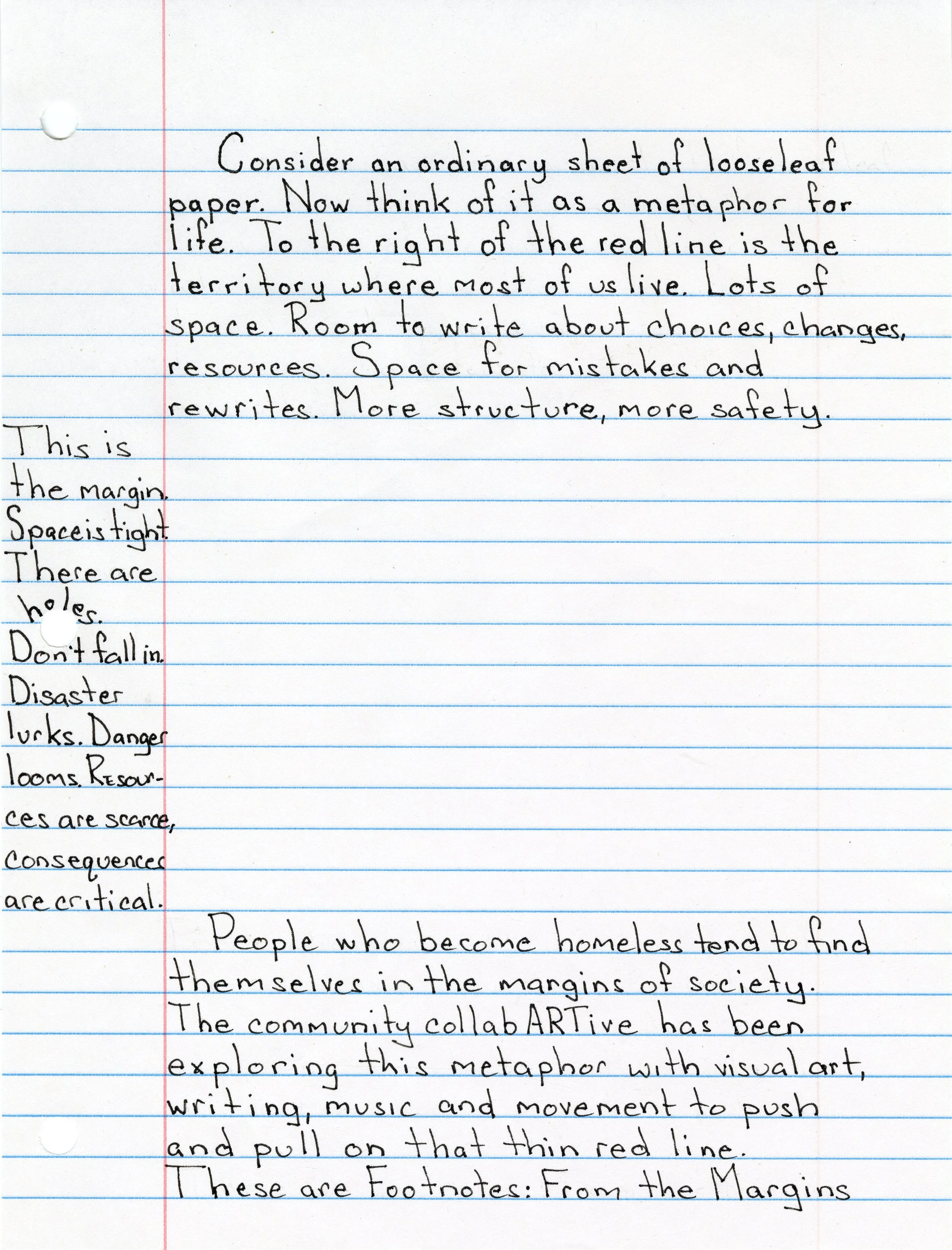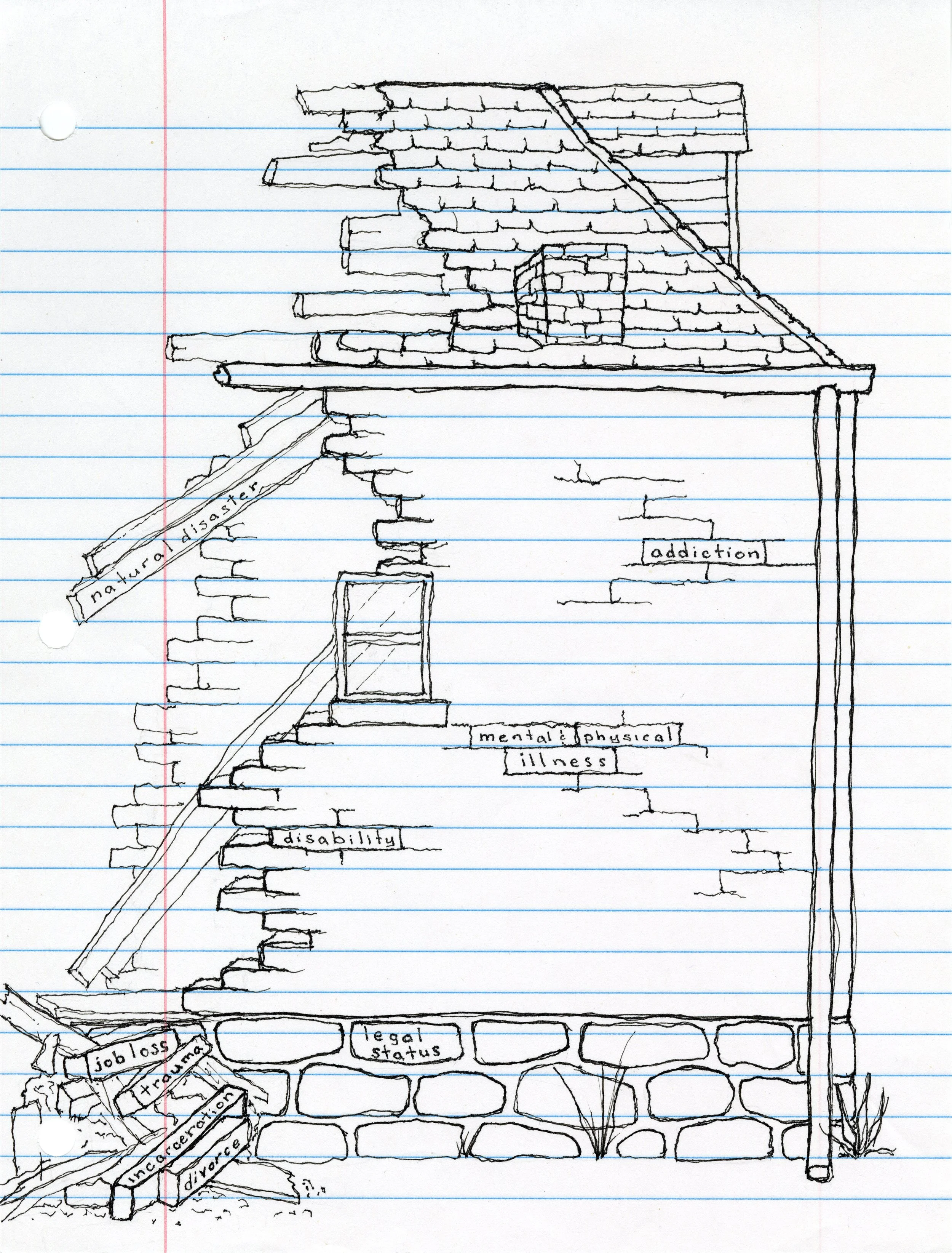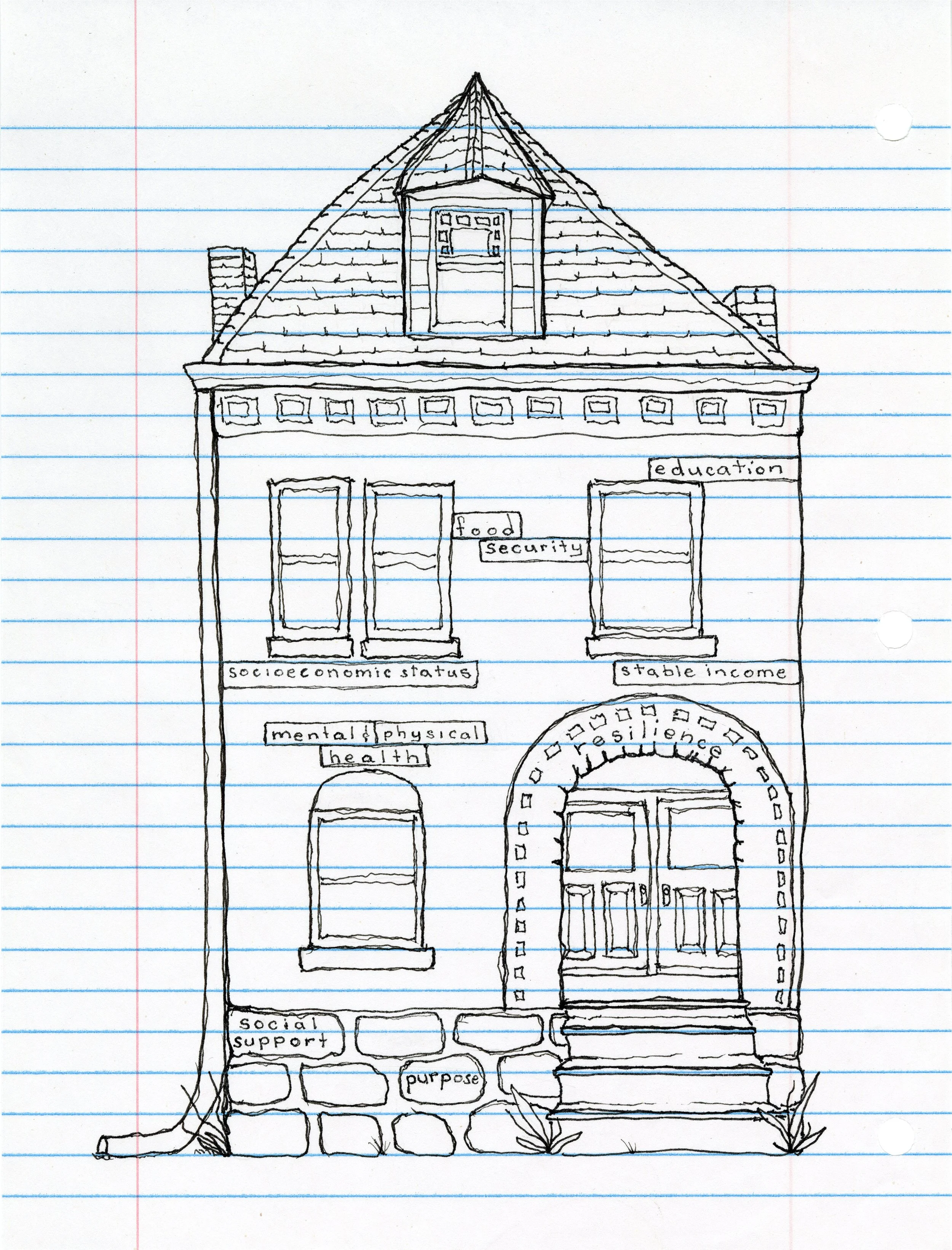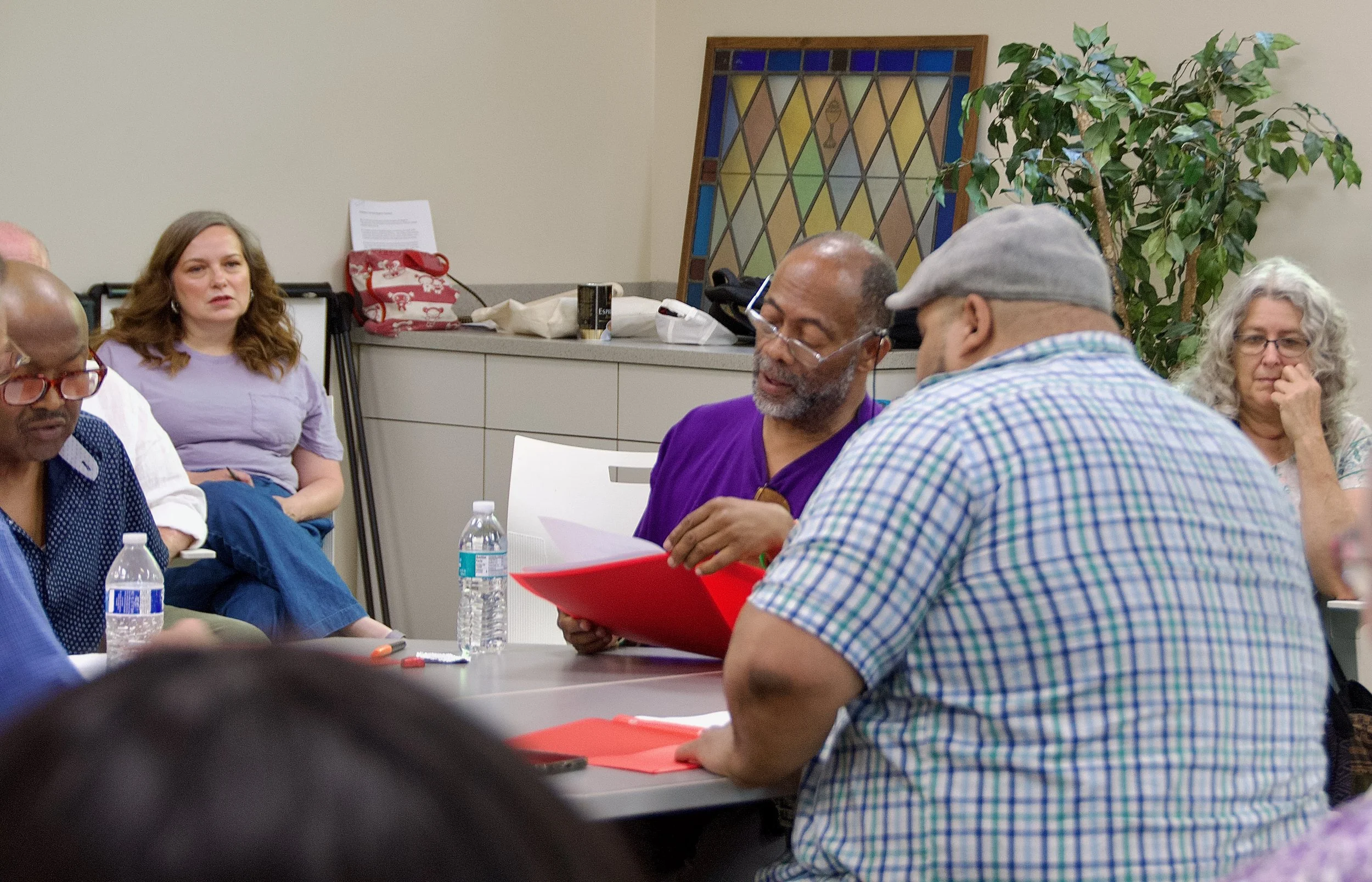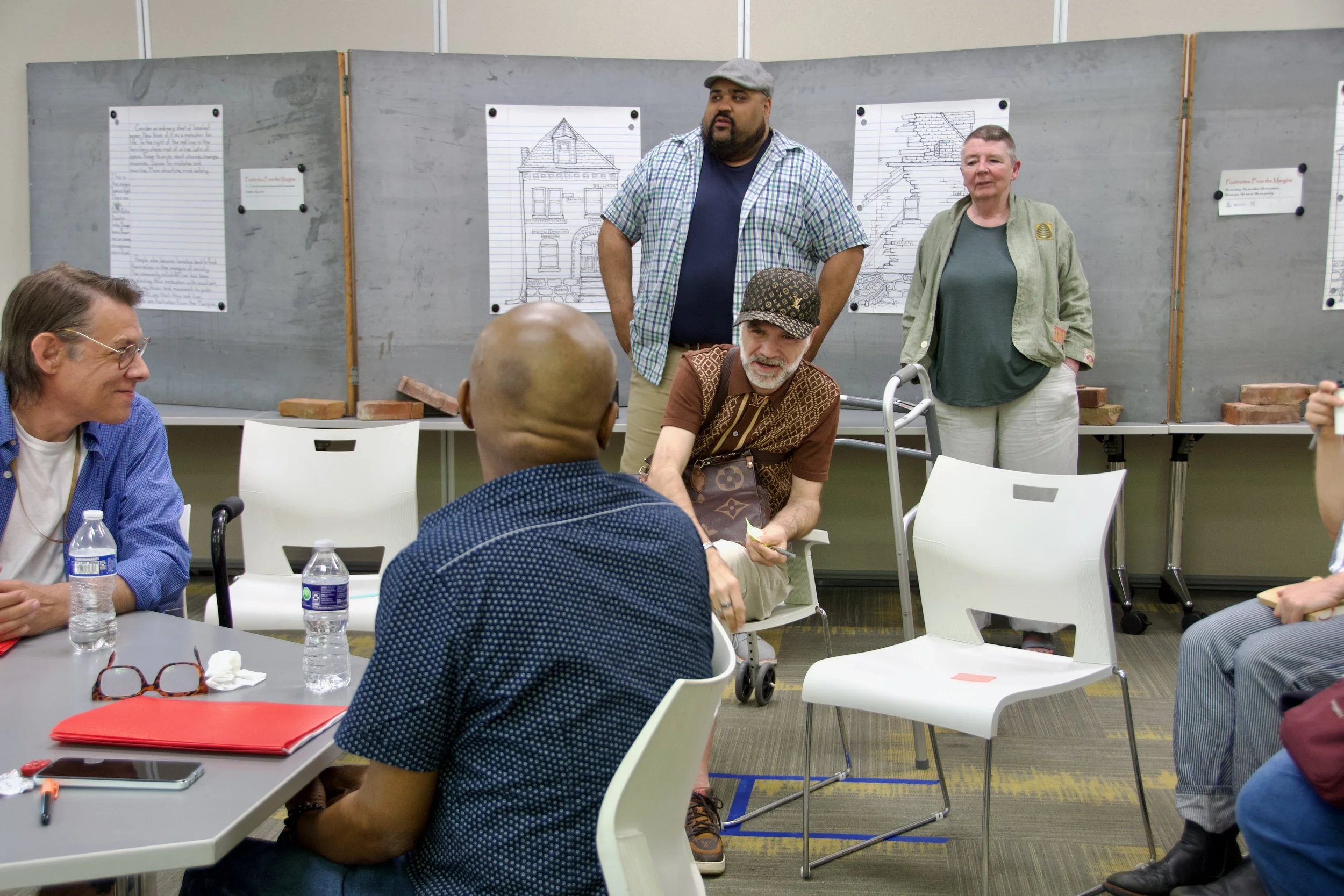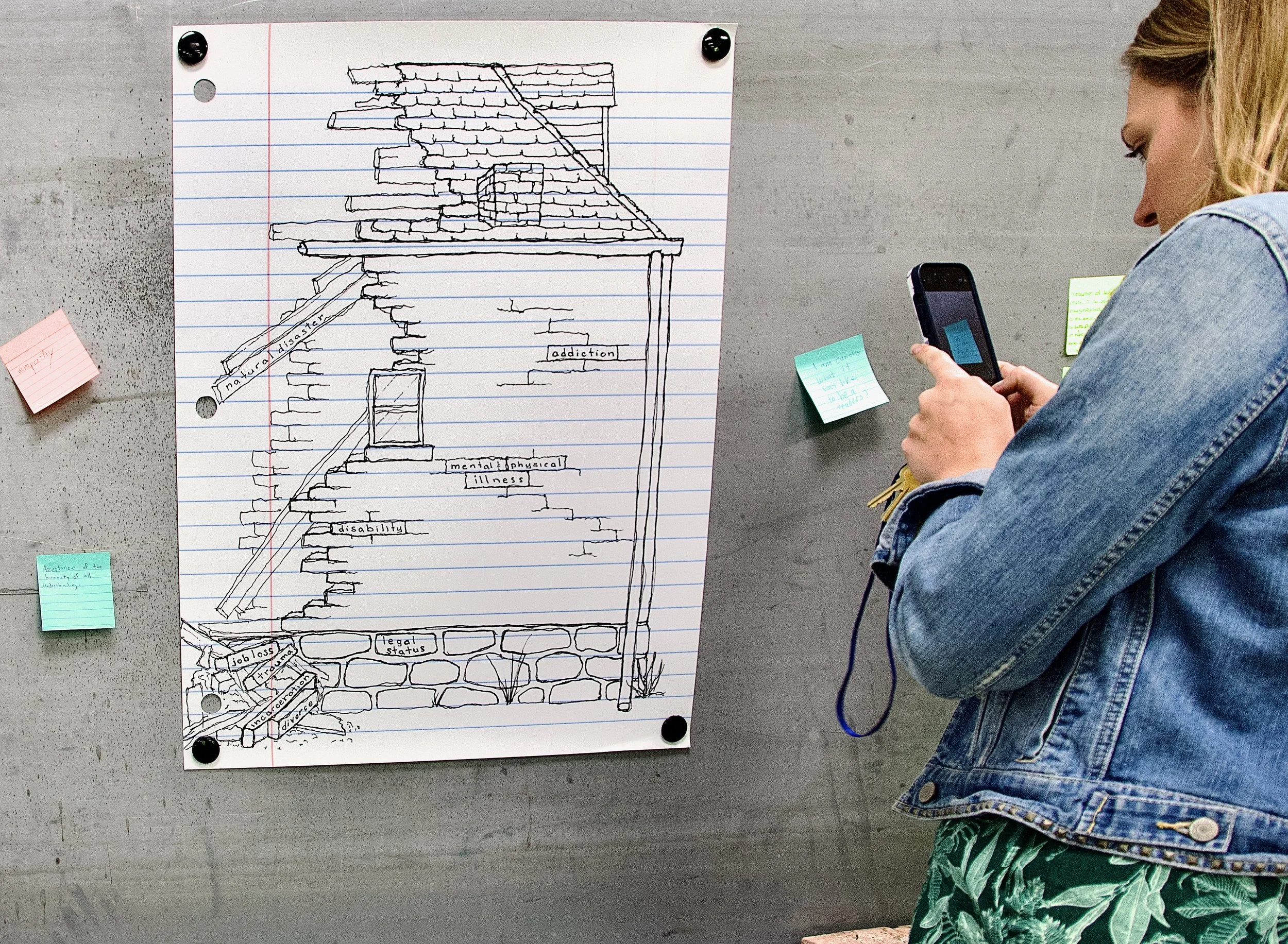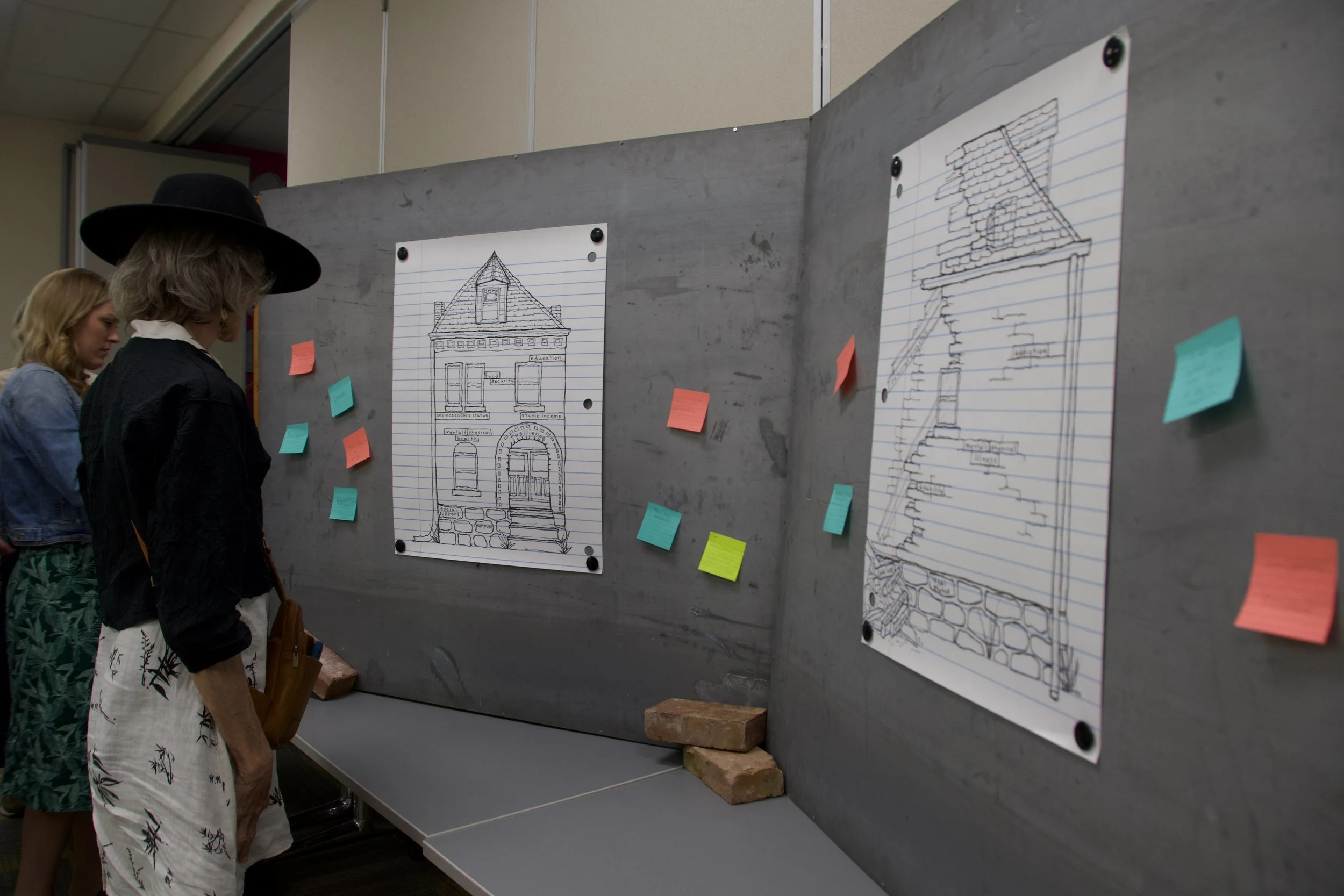
FOOTNOTES:
from the MARGINS
Picture This
As the world continues to spin, and homelessness remains a struggle,
Footnotes: From the Margins is an urgent and powerful piece of theater.
It shares OUR stories. It harnesses the power of community arts and engagement, about/with people, across sectors, to bring about positive social change.
~The first image in this ‘picture book’ introduces the concept of loose leaf paper with its red-line margins and prominent holes as a metaphor for society and its issues.
~The middle images you see are ‘house’ drawings that represent literal and figurative ‘lived’ experience. First, a side view that shows decay, deterioration, and specific challenges to stability and structure.
~The next view tells a story of challenges identified and challenges met with the ladder pointing to positive direction, choice, and change.
~The fourth drawing names many of the ways that we can resolve challenges…together. It’s the front of the ‘house’… intact, a shelter, a home.
The text tells us about some of the elements of a life well-lived, in process, in a house on the street where we live.
Community Art in Process
Over 25 years, more than 150 people from the Peter and Paul Community Services community have contributed their stories about displacement and destabilization to create Footnotes: From the Margins, a spoken-word performance. It is updated every few years to capture current experiences. Many of the writers also perform for audiences.
Since the first production in 2010, thousands of audience members have gathered in churches, schools, theatres, and even boardrooms to experience Footnotes.
In talkback sessions that follow each production, people are moved to share their own experiences with/about homelessness and come to new realizations about how people find themselves in a housing crisis. The goal of Footnotes is to go beyond the stereotypes and bridge the social divide that isolates and marginalizes people struggling with stability in the community.
The Beginnings
The story of Footnotes began in 1999 when Tom Burnham and Con Christeson developed a community arts program at Peter and Paul. The idea was that through art and culture work, participants' critical and creative thinking skills could be sharpened and directed towards the hard work of getting out of transitional housing and finding supportive communities, people, and resources.
As Christeson tells it, Burnham didn’t love the feeling of nagging people in the transitional housing program about job-hunting, saving money, etc.
The community arts support component, which developed into the community collabARTive, became a weekly workshop model that offers a unique approach to efficacy and accountability. Over the years, it became a place where participants could keep each other motivated and on-task while sharing resources and hard-won wisdom. Relationships with staff were impacted positively, creating more individualized planning for care and treatment. Each session was a metaphor for creative problem-solving for self and with others as they made art, told stories, and rebuilt their social and emotional infrastructure.
Soon after Burnham and Christeson introduced the community arts approach, other artists like poet and educator Jane Ellen Ibur were invited to offer workshops. After 8 years of listening and collecting stories, Ibur worked with residents to create a collectively-devised performance piece. Within a year, with feedback from participants, eight years of writings became an easy-to-produce script. Footnotes was born. Instead of a plot, it captures and keeps an audience’s attention with well-crafted snapshots of human experience and the emotional truth of homelessness.
The First Audience
The first performance of Footnotes was in 2010 for the Art and Soul Cafe at Christ Church Cathedral. The nave was cleared of pews, and audience members were seated at round tables. The performers entered from all directions, formed a circle around the audience, and began to read. After the reading, the audience was invited to respond to what they saw. It became apparent that not everyone understood that they had just seen a piece of theater.
Many in the audience thought the readers were professionals. Quite the contrary. As amateur actors, the readers presented poetry, stories, and essays from a script that they and many others had helped to write. Others in the audience assumed they had watched people sharing their own stories of being homeless. There was confusion, and even anger, when they learned that the readers all had experienced homelessness but were not [necessarily] playing themselves.
Many came to understand what they might have failed to see before i.e. that art and theatre provide insight into an issue that effects all communities at many levels. For others, there was meaningful connection, and they shared personal experiences of homelessness that were personal and affected family and friends.
Footnotes represents a counterpoint to popular media representations of homelessness and brings the viewer directly to one- on- one confrontation with real people and real life. It is an opportunity to say that homelessness is not an identity or a life sentence. It can be a temporary situation that, with individual approaches to solutions, can have a happy ending.
The Ever-Changing/Never-Ending Story
Footnotes has been performed regularly in the St. Louis area. It is part of several curricular programs i.e. Regional Arts Commission’s Community Arts Training institute, The Brown School for Social Work, Meramec Community College, Illinois Wesleyan University, and Leadership St. Louis. With each performance and with audience feedback, the script has grown and changed. The first script was 25 pages and took 40 minutes to perform. Since then, flexible versions and various runtimes can accommodate the addition of new stories and reach new audiences. The 2025 version of the performance was facilitated by artist and theater professional Carl Overly jr. with an eye to weaving together the past and the present, leaving room for future versions.
A Footnote to
Footnotes: From the Margins:
As we were preparing to install this exhibit in Spring 2025, a tornado devastated parts of St. Louis. At this writing, you can still drive through parks and streets that lost thousands of trees. Through neighborhoods with homes and businesses that have been damaged or destroyed. Some may not recover.
There are many stories of families who have lost their homes who also face generational poverty and lack of resources.
We do not want these stories to be discounted or discarded. We ask you, our audience, to consider the displacement and destabilization that occurred with this event and consider these images depicting the causes and cures for/about homelessness.
The big ideas area the same. Neighborhood stability, historic infrastructure, and recovery funding are important…the macro. We offer the micro lens of this exhibit—a metaphorical eye- of- the- camera— that you can use to think about these events and your ideas and the health and well being of our community.
We are all in some way connected. We are all impacted in some way.
How will we respond to the relatively limited effects of this tornadic weather event here and now?
How can we/should we/will we respond to the tsunami of displacement and destabilization?
Are there small, creative ways each one can help one or two to recover a sense of dignity, a sense of self in community, a kind of stability that is individual and collective?
Please ask questions. Listen for answers. Join the discussion.
You can reply on this website: http://conchristeson.us
Thank you.
Footnotes: From the Margins
Table Reading/Exhibit
May 2025
